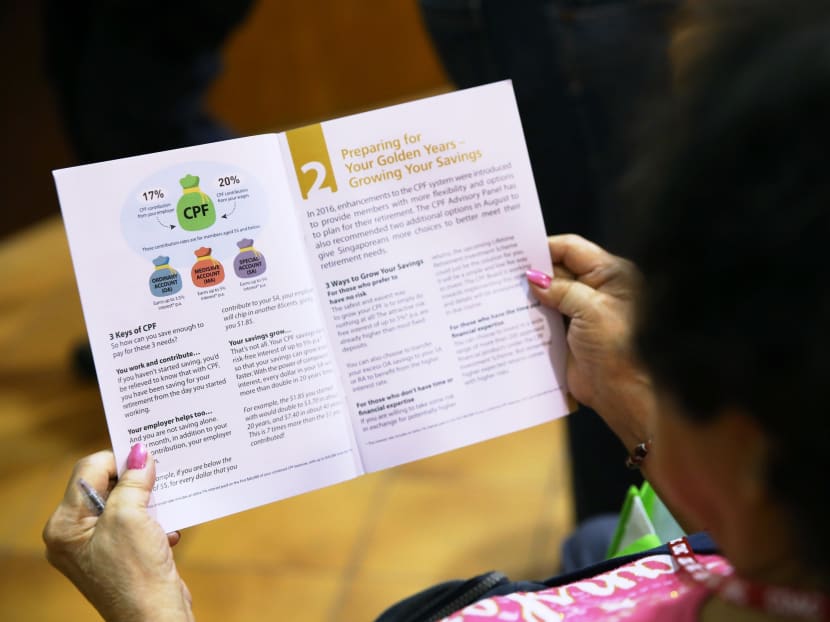How much you need to retire
It’s a common question: How much do I need to retire? And the answer is easier than you might think, if you take time to decide what is important and how you want to live in retirement.
It’s a common question: How much do I need to retire? And the answer is easier than you might think, if you take time to decide what is important and how you want to live in retirement.
The place to start is to figure out how much you are likely to spend each month after you retire.
Admittedly, that number varies widely, since each person has his or her own habits.
Online tools can provide a helpful start. Automated planners such as the CPF Retirement Calculator or the NTUC retirement planner can help, though most of them require you to put in how much you expect to spend each month.
You can use your current expenses as an initial guide and adjust the amount for your retirement lifestyle.
Make sure you include enough money for food, clothing, healthcare, transport, travel, insurance, recreation, utilities, household maintenance, communications, personal care and other expenses.
You should include an estimate for inflation, too, since prices continue to creep upwards by at least 1 to 2 per cent most years.
If that number is hard to estimate, an alternative is to use a tool such as the Aviva Planner, which enables you to input information about your lifestyle and come up with a monthly budget amount.
A SIMPLE LIFESTYLE, FOR A CHANGE
A 30-year-old who expects to retire at 65 and to live a simple lifestyle by taking public transport and eating at hawker centres rather than restaurants, for instance, would need about S$5,600 per month starting in 2052.
It is also important not to assume that your expenses will drop.
While some experts suggest that retirees are likely to spend 20 to 30 per cent less than they did when they were working, research by the Employee Benefit Research Institute in the United States found that 46 per cent of retirees spent more in the two years after they retired than before retiring, while one-third were still spending more after six years.
To see whether the amount is realistic, you can try changing your lifestyle for at least a short while, to reflect how you expect to live in retirement. This might mean reducing travel and cooking at home more, or adopting a frugal mindset.
You may still need to factor in a little extra. Dartmouth College professor Jonathan Skinner found in his research that conventional retirement planning recommendations could be too low, as many households need more than they expect. And even the best-laid plans can be spoiled by unexpected events such as a debilitating disease or a stock-market crash. Having a buffer can help.
GENERATING INCOME
Once you know how much you need, you can determine how to produce that amount every month.
One portion of your retirement income can come from the CPF Life plan under the Central Provident Fund.
Even if you put the current maximum of S$249,000 into the Enhanced Retirement Sum, however, your retirement income would be just S$1,860 to S$2,000 a month.
If this is enough to pay your expenses, you’re set. If not, you will need to save more.
The next step, then, is to calculate how much to save to produce the extra income you need.
Plan to have enough for about 20 years, since Ministry of Health data shows a 65-year-old man will live for another 19 years and a woman will live 22 more years. After subtracting your CPF Life income from the total you need, you can use a calculator on a financial planning website to see how much you need to save.
That 30-year-old example who lives a simple lifestyle would need about another S$3,700 a month after receiving S$1,900 from CPF Life. Assuming investment income of 4 per cent per year and 2 per cent inflation, the CPF Savings Calculator shows that the person would need about S$731,000 in savings.
While the amount varies depending on factors such as your expected return on investment, a calculator provides an initial estimate.
SAVE AS MUCH AS YOU CAN
Almost whatever number you come up with, the amount seems large. So the best way to accumulate so much is to start saving early.
The savings calculator from national financial education programme MoneySense, for instance, shows that a 30-year-old with no savings today would need to save S$800 per month to accumulate about S$731,000, if they earn 4 per cent per year on their investments.
A person who started saving at age 22, on the other hand, would need to save about S$530 a month.
Although either amount is a lot, the difference also highlights the advantage of starting to save early. Investing in ETFs or unit trusts can grow your savings into the amount you need.
While there is no single approach that fits everyone, calculating your “magic number” can help you start planning and saving early enough to have the amount you will need for a more comfortable retirement.







